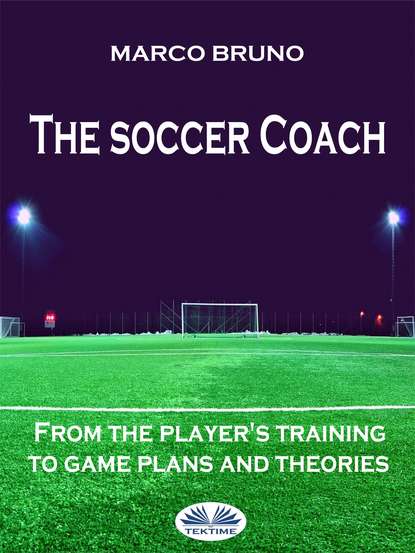По всем вопросам обращайтесь на: info@litportal.ru
(©) 2003-2024.
✖
The Soccer Coach
Настройки чтения
Размер шрифта
Высота строк
Поля
3) collaboration: working together with the group to achieve common purpose.
4) example: watching playing champions or better watching the right gaming actions; by using video footage you can improve learning, attitudes and habits.
5) training frequency: training quality is more important than frequency. If there is quality, the more time it will be devoted to training the better the improvements will be.
6) awareness of improvements: those who get good improvements are more willing to train. In a well-trained workout, players are aware of the progress they have reached.
7) competitiveness: to develop your skills you need a continuous search for overcoming your skills and limitations. Players will improve if more and more challenging tasks are assigned them, provided that they are not too difficult.
8) trust: coaches should teach the players to have confidence, but above all should encourage them in cultivating achievable hopes and ambitions.
Having determined how the player learns, we need to determine what he needs to learn in soccer training.
The soccer training areas are four:
- technique and tactics (coordination skills);
- physical condition (conditional skills);
- understanding (what to do and what not to do);
- psycho-social condition (behaviors).
1) Technique and tactics: they are the tools of the craft; the better they are the more effective, useful and surprising the achieved results will be.
2) Physical Condition: skills are not achievable unless they are accompanied by a good physical condition. This will be the predominant topic of our lessons.
3) Understanding: it consists in understanding what can be done and what needs to be done and distinguishes the good player from the others under the same physical and tactical condition. Doing something you know you cannot do is as serious as doing something right at the wrong time.
Understanding requires:
- Knowledge of game principles and rules;
- Intuition of what's going to happen;
- Decision of choice on what is best to do;
- Perception of space and time;
- Action, ready and immediate execution of what you chose.
4) The psycho-social condition: Knowing how to stay within a group (team), accepting diversity (skills, behaviors, physical abilities, experiences ...) working together to achieve common purpose is an indispensable condition for completing the others.
Before beginning the treatment of the basic elements for achieving a good physical condition it is necessary to briefly outline how the coach should teach and the principles on which an effective training action is based.
The principles of learning
The principles or rules of sports teaching are used to make optimal the methodical ability of action of coaches and athletes. These principles refer to all aspects and tasks of teaching, which determine contents, methods and organization.
1) Knowing the subject: you need to know soccer from a technical and tactical point of view, the principles of physical preparation, not being influenced by external and environmental factors, generally emotional and prevent the players from being affected.
2) Knowing how to learn: without knowing the principles of learning that we have listed before you cannot make a profitable workout.
3) Knowing the key factors of teaching: the key factors of teaching are:
a) purpose: it concerns objectives that are usually in the medium and long term, for example the improvement of the team's offense game or the improvement of force. Short-term goals emerge from the purpose.
b) objectives: they concern:
- the game with the ball (passages, controls, triangulations, etc.);
- the game without the ball (combined movement, support actions, crossed actions, etc.).
You cannot teach everything at once, but determine an order of priority and a logical sequence of training.
c) order of priority and the logical sequence - you cannot effectively teach different aspects of the game at once;
- between two factors, one will always have a logical precedence over the other. If you do not respect a logical sequence, it becomes all the more difficult. The same happens if you insist on teaching the right things, but at the wrong time. Close attention must be paid to the planning and organization.
d) planning and organization.
the planning involves the best use of the equipment and must be done in advance to give rise to the best possible organization.
The organization of an effective training session includes:
the choice of the area of the field to be used for training;
the right number of players participating;
a realistic training (players must be used in their real positions and during the exercises they should play in a realistic way, the goalies must always be regular because the two essential aspects of soccer are the shoots and the scoring);
an adequate start of the exercise and quality of the steps (many workouts are dragged wearily because little attention is given to the way to start the exercise and the steps are sloppy);
simplicity and clarity (all players must understand what you want to do and get with that kind of training).
e) ability to observe: the observation of a training session must lead the technician to understand if:
- the training takes place in accordance to the organization;
- the attitude of the players is stimulated and interested;
- the action of collective play reaches its goal;
- the specific action of the individual is beneficial to the group work.
If all this is not achieved, ask yourself some questions:
- physically, is the player able to perform that task?





